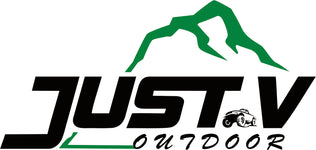
Essential Knowledge and Your Off Road Medical Kit
Venturing off the beaten path is exhilarating, but it also means you're further away from immediate help if things go sideways. While we all hope for smooth rides, bumps, bruises, and even more serious injuries can happen out on the trail. Being prepared with a well-stocked first aid kit and the know-how to use it isn't just smart – it's crucial for your safety and the well-being of your crew.
The Unique Risks of Off Roading
Think about it: uneven terrain, potential for falls around the vehicle or on the trail, encounters with wildlife, and the increased time it might take for emergency services to reach you all contribute to a higher risk profile than your average day. A scrape from a bush on a hike is one thing; a twisted ankle miles from civilization is another entirely.
That's why a comprehensive first aid kit tailored to the specific risks of off-roading is non-negotiable.
Building Your Off Road Ready Medical Kit
Forget the flimsy, store-bought kits with a few bandages and antiseptic wipes. Your off-road kit needs to be more robust and cater to potential trailside emergencies. Here's a breakdown of essential categories:
Wound Care:
- Assorted adhesive bandages (various sizes and shapes)
- Gauze pads (different sizes)
- Medical tape
- Antiseptic wipes or solution (like povidone-iodine or benzalkonium chloride)
- Antibiotic ointment
- Sterile saline solution for irrigation
- Trauma shears (to cut clothing)
Sprains, Strains, and Fractures:
- Elastic bandages (various widths)
- Instant cold packs
- Triangular bandages (can be used as slings or for binding)
- Safety pins (to secure bandages)
- SAM splint or similar flexible splint
Pain Relief:
- Over-the-counter pain relievers (ibuprofen, acetaminophen)
Allergies and Reactions:
- Antihistamines (for allergic reactions)
- EpiPen (if anyone in your group has a known severe allergy)
Other Essentials:
- Tweezers (for removing splinters or debris)
- CPR breathing barrier with one-way valve
- Latex-free gloves
- Small notebook and pen (to record vital signs or instructions)
- Emergency blanket (for shock or hypothermia)
- Headlamp or small flashlight with extra batteries
- A basic first aid manual or quick reference guide
Organization is Key: Store your kit in a durable, waterproof container that's easily accessible in your vehicle. Consider using zippered bags or dividers within the main container to keep items organized and easy to find in a stressful situation.
Essential First Aid Knowledge
Having a well-stocked kit is only half the battle. Knowing how and when to use the contents is just as, if not more, important. Consider taking a basic wilderness first aid course or a standard first aid and CPR certification. These courses will equip you with the skills to:
-
Assess the Situation: Quickly and calmly evaluate the injury or illness.
-
Control Bleeding: Apply direct pressure, elevate the injured limb, and use a tourniquet as a last resort (and know how to use it correctly!).
-
Care for Wounds: Clean and dress injuries properly to prevent infection.
-
Treat Sprains and Strains: Use the RICE method (Rest, Ice, Compression, Elevation).
-
Recognize and Treat Shock: Understand the signs of shock and how to help someone experiencing it.
-
Handle Environmental Emergencies: Learn about treating heatstroke, hypothermia, and dehydration – all potential risks on the trail.
-
Know When to Call for Help: Understand the limitations of your first aid skills and when it's crucial to contact emergency services (and how to do so if you have communication).
Pro Tip: Before heading out, discuss any known medical conditions or allergies within your group. Knowing this information can be vital in an emergency.
Familiarizing Yourself with Your Kit
Don't wait until an emergency to open your first aid kit. Take some time to familiarize yourself with the contents. Know where everything is and how to use the different items. You can even practice applying bandages or using a splint on a willing participant.
While we hope you never have to use your off road first aid kit for anything serious, being prepared is a sign of responsible adventuring. It allows you to confidently explore knowing you have the tools and knowledge to handle minor injuries and potentially life-threatening situations until professional help arrives. Stay safe out there!
FAQs
Why is a specialized first aid kit important for off-roading?
Off roading carries unique injury risks, and help may be delayed in remote areas, requiring a more comprehensive kit.
What are some key items to include in an off-road first aid kit?
Focus on wound care, sprains/strains, pain relief, and having a CPR barrier. A first aid guide is also vital.
Besides having a kit, what else is important for trailside first aid?
Knowing basic first aid skills and understanding how to use the items in your kit are crucial for effective response.
